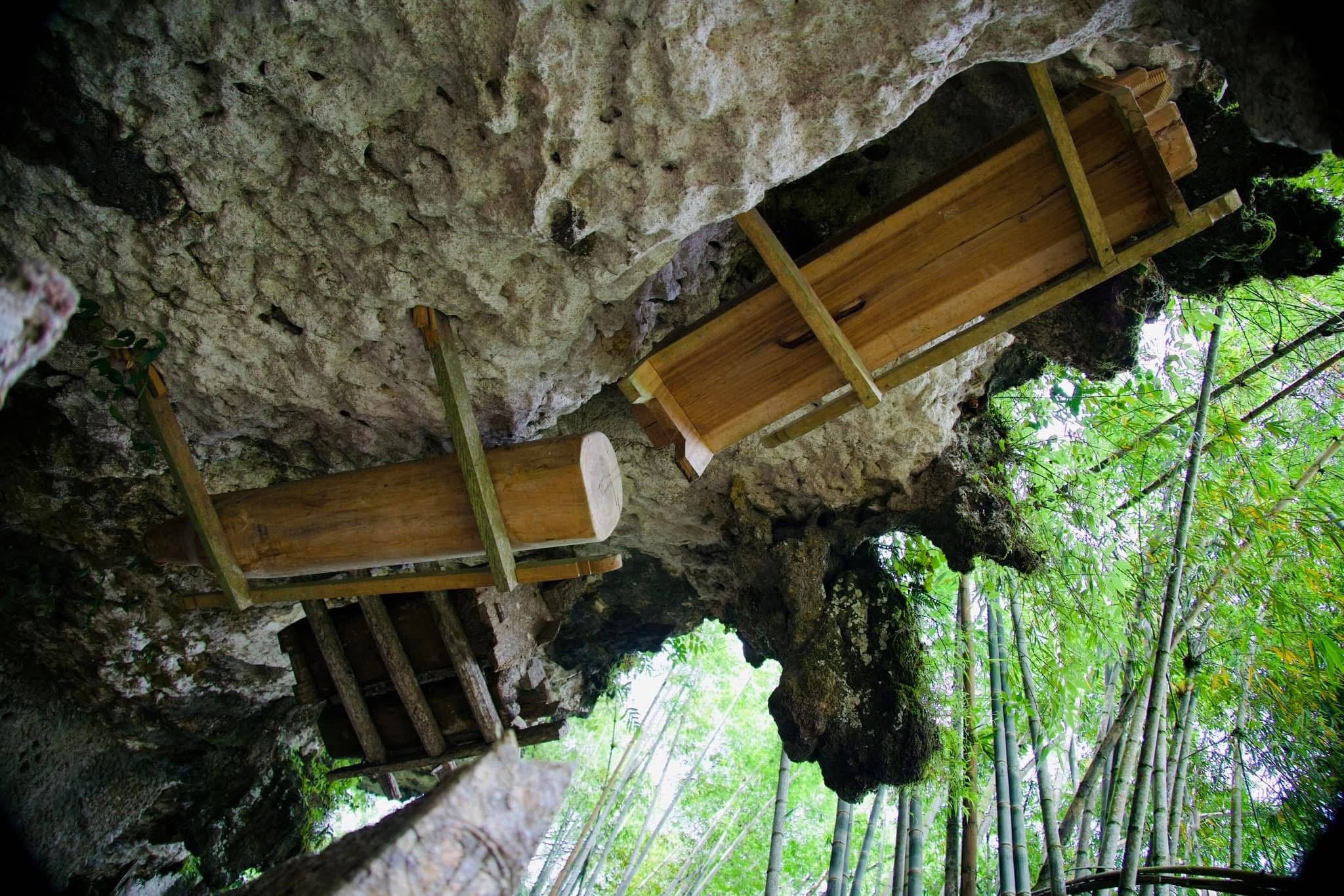
Torajan Burial Practices:
Cave Graves and Modern Graves
There’s a stillness that settles over me in the presence of bones. A quiet, grounding peace that feels like a bridge between the living and the dead. Each curve, each hollow, holds the weight of a story long finished, yet somehow still breathing, present, real and raw. There’s no fear here, only a gentle reminder of impermanence, a whisper of connection to something vast and unspoken. Among bones, I find the noise of life quiets, and what’s left is the steady rhythm of existence, pure, simple, and unadorned.
In Toraja, the way the deceased are buried reflects a deep respect for ancestors, with burial methods that honour this connection. One of the most iconic burial methods is the liang, a traditional tomb carved into cliffs or natural caves. These tombs, often perched high in the mountains, are sacred resting places where the deceased's soul is believed to find peace and connection with the living and the divine.
Building a liang is no small feat—it takes about six months to complete, and only two workers are allowed at a time due to the narrow spaces. The cost of constructing a liang can range between 80 to 200 million Indonesian rupiahs (IDR), approximately 7,500 to 18,500 Australian dollars (AUD). The construction involves carving into the cliff or rock face and setting up a resting place for the deceased, often accompanied by wooden effigies called tau tau. These life-sized statues, dressed in the deceased’s clothes, ensure the spirit’s continued presence among the living.
A central element of Torajan burial rituals is the erong and airong. The erong is a wooden coffin, intricately carved and designed to hold the deceased, and the airong is a wooden and bamboo platform used to transport the body to its final resting place. This process of carrying the body represents both a physical journey and a spiritual passage toward the afterlife.
In the mountainous terrain of Toraja, where flat land is reserved for farming, the airong and liang are both practical and symbolic. The airong and liang also reflect the Torajan belief in life after death. The lahundong graves, once a common practice, were carved into cliffs or placed on ledges. These graves, while conserving valuable flat land and offering protection from animals and the elements, symbolised the deceased's upward journey toward the heavens. However, with the spread of Christianity, the practice of hanging graves has become less common, though it remains a powerful reminder of the Torajan people’s deep spiritual connection with the earth and the sky.
The Lombok Parinding Burial Cave, which has served as a resting place for the dead for over 700 years, offers a haunting glimpse into this sacred tradition. Inside, intricately carved erong coffins rest beside exposed skulls and bones. Bodies are placed in natural crevices or niches carved into the rock, blending with the cave’s organic structure. This sacred site is one of my favourite places to sit, meditate, and breathe.
The Londa Cave Cemetery, nestled in a stunning limestone cliff, holds wooden coffins, skulls, and bones that have rested there for centuries. Tau-tau effigies, hand-carved wooden figures representing the spirits of the dead, stand as guardians at the entrance. The cemetery was originally reserved for seven local families, each from different caste statuses. Those from lower castes were placed inside the cave, while the highest caste members were given the most honoured spots, high up on the cliff with a view of the mountains. This arrangement not only reflects tradition but also a visual hierarchy that connects ancestry, status, and the afterlife.
While the traditional burial practices are still revered, there has been a shift toward more contemporary methods, particularly in urban areas and among families who have moved to cities. The cost of a modern Christian grave typically ranges from 50 to 60 million IDR (approximately 4,600 to 5,500 AUD). These graves are much simpler than the elaborate liang tombs, often featuring headstones and earth burials in well-maintained cemeteries. Urbanisation and changing religious practices have contributed to this shift. However, even in modern cemeteries, many families still incorporate elements of the old rituals, such as holding traditional funeral ceremonies or placing offerings for the deceased.
The ancient cliffside tombs and simpler modern graves both reflect the Torajan people’s respect for their ancestors and their deep connection to the past. While burial practices may evolve, the fundamental values of honouring the deceased and maintaining that spiritual bond remain unchanged.



























